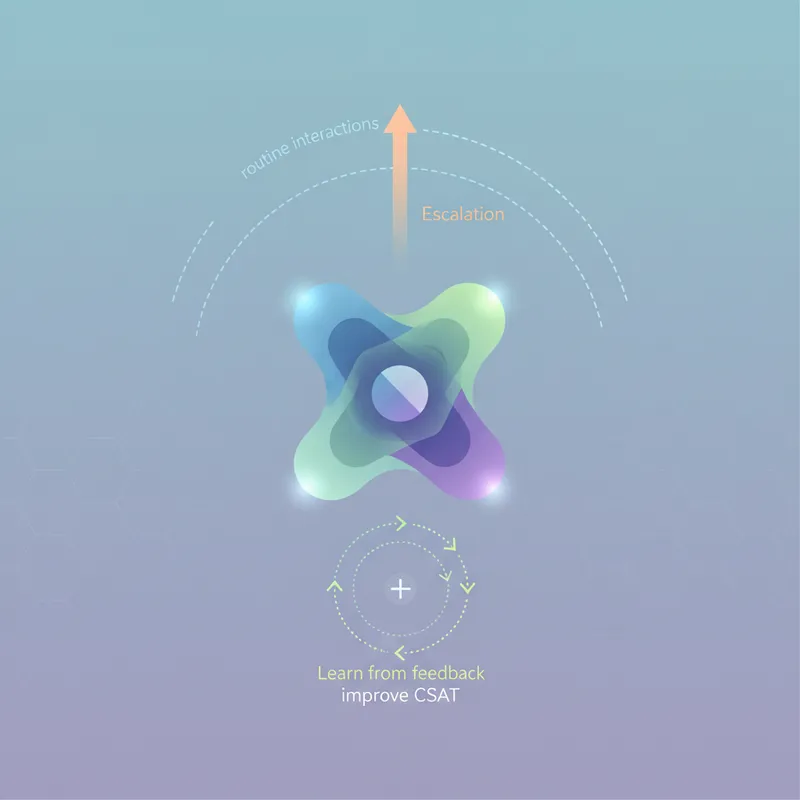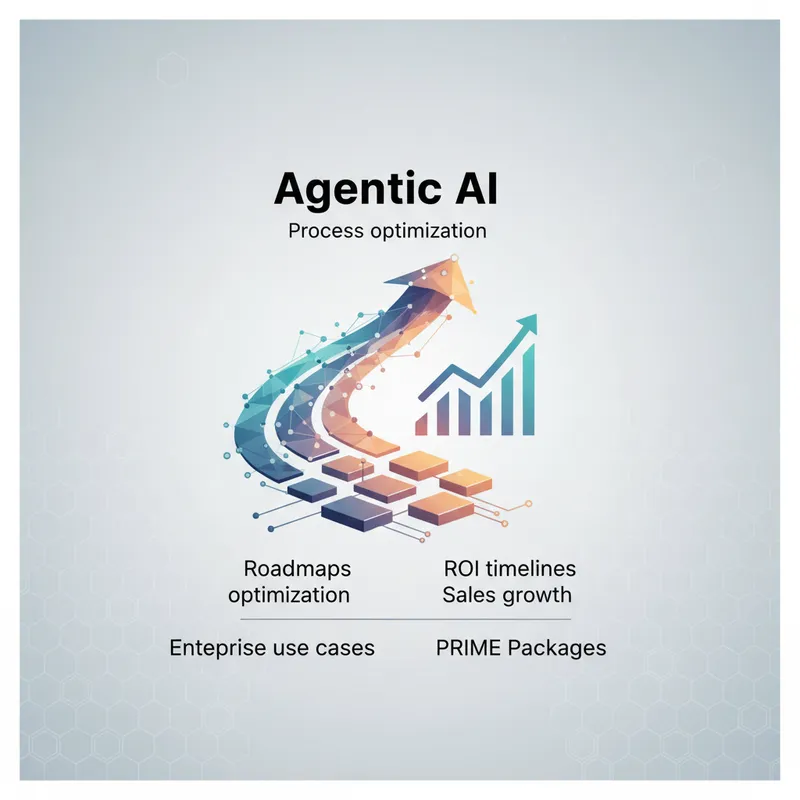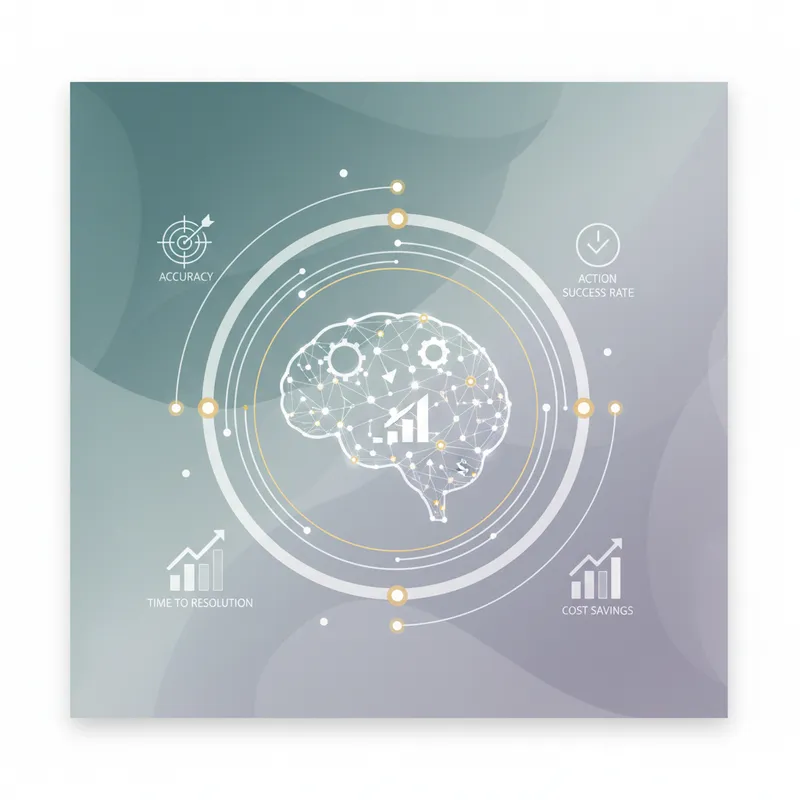
Businesses that want to scale need reliable systems that operate smoothly. Autonomous agents offer a modern approach to identify, prioritize, and remediate operational bottlenecks so teams can focus on value creation. This service landing page explains how autonomous agents work as case-ready services to fix inefficient business processes with speed and precision while minimizing disruption. The goal is to provide a clear path from discovery to remediation and to show measurable results in productivity and cost reduction.
Using autonomous agents to fix inefficient business processes means deploying software that observes workflows, detects recurring blockers, and applies proven fixes either automatically or through guided approvals. These agents can surface hidden waste, prioritize what matters most, and execute remediation steps across systems and teams. The result is faster cycle times, fewer manual handoffs, and predictable improvements in service delivery and output quality.
Below we walk through the detection methods, prioritization frameworks, remediation patterns, implementation roadmaps, and metrics that organizations need to adopt autonomous agents as case-ready services. The content is designed for leaders and operators who want actionable guidance to fix inefficient business processes without long disruption windows or heavy upfront investments.
How Autonomous Agents Detect Inefficiencies
Autonomous agents collect and analyze data across processes to uncover waste and variability that human observers can miss. They integrate with project management systems, ticketing platforms, communication channels, and system logs to create a composite view of workflow health. This multi-source monitoring is critical to fix inefficient business processes because single-point observations rarely show root cause patterns. Learn more in our post on Best Practices: Designing Safe Reward Functions and Constraints for Autonomous Agents.
Detection starts with instrumentation. Agents tag events, record timestamps, and capture metadata. They map common paths and deviations, then compute metrics such as wait time, rework rate, and throughput. With this timing and event data, autonomous agents can identify choke points where queues grow or handoffs stall. These quantitative signals are the first step to prioritize remediation and to fix inefficient business processes with data driven confidence.
Behavioral analysis complements timing data. Agents use pattern recognition to detect repeated manual corrections, frequent escalations, and recurring exceptions. These patterns often reveal policy gaps or misaligned responsibilities. By combining timing, volume, and behavior, agents build a prioritized list of problems that are most likely to impact service levels and cost. When agents present these findings, teams gain a clear plan to fix inefficient business processes and reduce operational risk.
Key detection techniques
Event tracing across systems to map process flow and handoffs.
Statistical anomaly detection to find spikes in delays or failures.
Sequence mining to surface repeated rework loops and exceptions.
Correlation of human interactions with system events to find where manual work adds delay.
Root cause tracing to connect symptoms with upstream errors or constraints.
Autonomous agents can run these techniques continuously, which enables organizations to fix inefficient business processes proactively instead of reacting only after customer impact. Continuous detection also supports A B testing of remediation strategies so teams can measure what reduces delay and rework most effectively.

Prioritizing Bottlenecks: How Agents Decide What to Fix First
Not all inefficiencies are equal. To fix inefficient business processes effectively, autonomous agents use prioritization frameworks that consider impact, frequency, and fixability. Impact measures how much delay or cost a problem causes. Frequency measures how often it occurs. Fixability measures how quickly the issue can be remedied and whether remediation carries risk. Learn more in our post on Investment Signals: What VC and Enterprise Spending in 2025 Means for Automation Buyers.
Agents compute a priority score by combining these factors and adding context such as customer severity, regulatory exposure, and strategic importance. High impact, high frequency, and high fixability items rise to the top. This prioritization ensures scarce resources focus on changes that generate the biggest return. When agents recommend actions, stakeholders see quantitative justification to fix inefficient business processes rather than making intuition based decisions.
Prioritization also includes dependency mapping. Some problems only make sense to fix after upstream issues are resolved. Autonomous agents build dependency graphs to prevent wasted effort on symptoms rather than root causes. By sequencing remediation tasks, agents help teams avoid rework and compound improvement across the entire process chain. This systemic approach is essential when the objective is to fix inefficient business processes at scale.
Prioritization components
Impact assessment tied to SLAs, customer outcomes, and operating costs.
Frequency analysis across periods to detect chronic versus one off issues.
Effort estimation including human and technical work required to deploy a fix.
Risk evaluation to weigh potential side effects and rollback complexity.
Dependency mapping to sequence remediation for maximal leverage.
With these components, autonomous agents deliver a ranked backlog of remediation tasks with clear business case estimates. Teams use this backlog to plan sprints, allocate resources, and communicate expected improvements to stakeholders. The result is a disciplined pathway to fix inefficient business processes while maintaining service continuity.
Automated Remediation and Orchestration
Once agents detect and prioritize issues, the next step is remediation. Autonomous agents can automate a range of corrective actions depending on governance and integration level. Low risk changes such as reassigning tasks, updating status fields, or sending templated communications can be executed automatically. Higher risk fixes require human approvals with guided playbooks to standardize corrective steps. Learn more in our post on Sustainability and Efficiency: Environmental Benefits of Automated Workflows.
Remediation automation relies on prebuilt playbooks and connectors to systems of record. Agents execute playbooks that encapsulate best practice sequences: verify the issue, run corrective scripts, update records, and notify stakeholders. These playbooks are reusable, auditable, and version controlled, which reduces the chance of ad hoc fixes that may introduce new problems. Using agents to run these playbooks helps organizations fix inefficient business processes faster and more consistently.
Orchestration coordinates multiple systems and teams during remediation. For example, resolving a supply chain hold might require a purchase order update, a shipping carrier notification, and a customer service message. Autonomous agents manage these parallel tasks, ensure handoffs occur, and escalate when time limits are exceeded. The orchestration layer enforces compliance and reduces friction, enabling teams to focus on exceptions that need judgement rather than routine corrections.
Automation patterns
Safe fixes: automated updates that can be run without approval such as status changes, cache clears, and routine reconciliations.
Guided fixes: playbooks that require a human sign off before agents execute changes in live systems.
Transactional fixes: multi step sequences with rollback support and audit logs for compliance.
Collaborative fixes: actions that coordinate cross functional teams with scheduled checkpoints and shared context.
By adopting these patterns, organizations can strike a balance between speed and control. Autonomous agents enable controlled automation so teams can fix inefficient business processes at a pace that aligns with risk tolerance and governance policies.

Case-Ready Services: Implementation Roadmap
Case-ready services package autonomous agents into deployable offerings that include templates, integrations, and governance playbooks. They allow organizations to accelerate their ability to fix inefficient business processes without building infrastructure from scratch. A case-ready approach bundles detection models, remediation playbooks, and measurement dashboards to create a repeatable implementation path.
The implementation roadmap for case-ready services follows clear stages: discovery, pilot, scale, and continuous improvement. During discovery, agents are configured to collect data and baseline process performance. The pilot focuses on a limited scope where agents detect issues, prioritize them, and run a set of low risk playbooks. Pilot results validate the approach and inform adjustments.
Scaling expands agent coverage across processes and integrates additional systems. Case-ready services provide templates for common industry workflows to reduce configuration time. Governance policies and role based access control are applied at scale so agents can run automated remediation within defined limits. With these guardrails, businesses can broaden automation and continue to fix inefficient business processes while maintaining control.
Roadmap steps
Discovery: instrument systems, define success metrics, and baseline performance.
Pilot: run a focused pilot on a high impact process and validate remediation playbooks.
Scale: extend agent coverage, onboard more integrations, and automate higher complexity fixes with approvals.
Optimize: use continuous feedback loops to refine detection models and playbooks.
Case-ready services shorten time to value by providing proven playbooks and prebuilt connectors. They let teams fix inefficient business processes fast while preserving the flexibility to adapt playbooks to unique organizational constraints. The packaged approach also eases skills gaps since the service includes operational templates and best practice guidance.
Measuring Impact and Continuous Improvement
To sustain gains and justify investment, organizations measure the impact of autonomous agents across multiple dimensions. Typical metrics include cycle time reduction, rework rates, number of escalations, cost per transaction, and customer satisfaction. Agents track these metrics continuously and tie improvements to specific remediation actions so teams can prove cause and effect when they fix inefficient business processes.
Measurement starts with a baseline. Before agents run remediation at scale, teams capture pre intervention metrics. After remediation, agents report delta improvements and calculate time to recovery for incidents. By correlating remediation playbooks with metric changes, organizations learn which fixes deliver the greatest return. This empirical approach supports data driven decisions to prioritize future work that will fix inefficient business processes further.
Continuous improvement uses closed loop feedback. Agents log the outcomes of each action and feed results back into detection models and playbooks. If a playbook underperforms, the system flags it for review and suggests alternative strategies. Over time, this learning loop increases the accuracy of detection and the effectiveness of remediation so that the organization becomes better at fixing inefficient business processes with each iteration.
Recommended KPIs
Average process cycle time and change over baseline.
Percentage reduction in manual handoffs.
Rate of recurring exceptions before and after remediation.
Cost savings per period attributed to automation.
User and customer satisfaction scores related to process speed and quality.
By tying agent interventions to these KPIs, teams can build a business case for wider adoption and demonstrate the strategic value of autonomous agents as a tool to continuously fix inefficient business processes.

Operationalizing Autonomous Agents Safely
Adopting autonomous agents requires careful operational controls to ensure safe and effective remediation. Organizations must establish governance that defines what agents can do automatically and what requires human oversight. Role based permissions, approval workflows, and audit logging provide traceability and reduce the risk of unintended changes.
Testing and validation processes are critical. Before deploying a playbook into production, agents should validate changes in a staging environment and run simulations to ensure no downstream processes break. Canary deployments and phased rollouts further limit exposure. These safeguards let teams fix inefficient business processes without sacrificing reliability or compliance.
Another operational priority is transparency. Agents should generate clear, human readable action logs and provide context for decisions so operators can understand why a remediation ran and what it changed. This clarity builds trust and makes it simpler to troubleshoot unexpected outcomes. When operators can review agent reasoning and results, they can approve broader automation with confidence.
Safety checklist
Define clear automation boundaries and approval thresholds.
Implement role based access control and separation of duties.
Run staging tests and simulations before production deployment.
Use phased rollouts and monitoring for early detection of issues.
Maintain detailed audit logs and human readable explanations of agent actions.
Operational discipline ensures agents remain a tool for making sustained improvements and to fix inefficient business processes while preserving control and accountability across the organization.
Change Management and Adoption
Successful adoption of autonomous agents is as much about people as it is about technology. To fix inefficient business processes, teams need clear communication, training, and incentives that encourage the use of agent recommendations. Change management plans should address common concerns such as job displacement, loss of control, and trust in automation.
Start with stakeholder alignment. Engage leaders and frontline staff early to define desired outcomes and acceptable automation boundaries. Provide training that focuses on how agents reduce repetitive work and improve daily productivity. Use pilot results to create quick wins that illustrate benefits and build momentum to fix inefficient business processes more broadly.
Adoption also benefits from governance forums where operators review agent recommendations and refine playbooks. These forums help create a culture of continuous improvement and shared ownership. When teams participate in shaping agent behavior, they are more likely to accept automation and collaborate to scale solutions that fix inefficient business processes throughout the organization.
Adoption tactics
Communicate benefits through case studies and pilot results.
Offer hands on training and simulation environments for operators.
Provide clear escalation paths for contested agent actions.
Recognize teams and individuals who contribute to successful remediation outcomes.
Combining technical enablement with strong change management ensures that autonomous agents become an enabler to fix inefficient business processes rather than a source of friction.
Common Challenges and How to Overcome Them
Introducing autonomous agents to fix inefficient business processes can surface obstacles. Common challenges include poor data quality, fragmented systems, lack of process documentation, and cultural resistance. Each challenge has practical mitigations that preserve momentum and reduce risk.
Poor data quality is often the first barrier. Agents rely on accurate timestamps, consistent event names, and complete records. Where data is inconsistent, teams should implement lightweight data contracts and validation rules. These fixes not only improve agent performance but also yield immediate improvements in reporting and operational clarity to fix inefficient business processes.
Fragmented systems can limit agent visibility. Integrating connectors and using middleware can create a unified event stream. When direct integration is not possible, agents can use process mining techniques on exported logs to reconstruct flows. This approach allows teams to start fixing inefficient business processes even before full integration is complete.
Lack of documentation makes it harder to map processes and determine expected behaviors. Simple process mapping sessions with stakeholders provide the necessary context. Agents can then use these maps to align detection rules and playbooks. This combined human plus agent approach accelerates progress to fix inefficient business processes.
Cultural resistance often arises from fear of automation. Mitigation includes transparent communication, demonstration of quick wins, and positioning agents as assistants that remove repetitive tasks. Involving users in playbook design helps build ownership. Over time, visible improvements in workload and throughput make it easier to adopt agents that fix inefficient business processes.
Mitigation strategies
Improve data quality through validation, contracts, and remediation rules.
Bridge system gaps with connectors or log based process mining.
Collaborate on process mapping to inform agent behavior and expectations.
Use transparency and inclusion to reduce cultural resistance to automation.
By anticipating these challenges and applying practical mitigations, organizations can maintain momentum and progressively fix inefficient business processes across the enterprise.
Real World Outcomes and ROI
Organizations that adopt autonomous agents and case-ready services to fix inefficient business processes see measurable gains. Typical outcomes include reduced cycle times, lower operational costs, improved throughput, and higher customer satisfaction. The payback period is often months rather than years when agents focus on high impact, repeatable problems.
ROI calculations should include labor savings from reduced manual work, cost avoidance from fewer escalations, and revenue gains from faster time to customer. Agents also reduce error rates which lowers remediation costs and improves quality. By linking agent activities to financial and operational KPIs, teams can make a strong business case to scale investments that fix inefficient business processes.
Beyond direct financial impact, agents enable teams to refocus on strategic work. Removing repetitive low value tasks increases employee engagement and frees capacity for innovation. These qualitative benefits compound over time and make continuous improvements easier to implement, further enhancing the ability to fix inefficient business processes across departments.
Steps to quantify ROI
Establish baseline metrics for cost, time, and error rates before automation.
Tag agent interventions to specific KPI changes to demonstrate causation.
Run controlled pilots to estimate improvement rates and scale projections.
Include both direct cost savings and indirect benefits such as reduced churn in ROI models.
Using these steps, decision makers can evaluate the return on investment and prioritize expansions that will continue to fix inefficient business processes and create cumulative organizational value.
Getting Started: Practical Steps for Leaders
Leaders ready to adopt autonomous agents to fix inefficient business processes should follow a pragmatic plan. Start small with high impact areas, validate results, and expand coverage in waves. A clear governance model and a focus on measurable outcomes are essential to sustain momentum and to build trust in the automation capability.
Begin by selecting a pilot that has a known pain point, measurable metrics, and willing stakeholders. Instrument that process, run detection models, and let agents propose prioritized remediations. Use safe automation patterns to implement early wins and collect evidence. These early results will form the basis for scaling and for constructing a more comprehensive case-ready service offering tailored to your organization.
Finally, invest in skills and change management. Train operators to interpret agent recommendations and to maintain playbooks. Create forums for continuous feedback and refinement. With steady iteration, leaders can embed autonomous agents into operations and consistently fix inefficient business processes while building a culture that embraces data driven improvement.
Conclusion
Autonomous agents and case-ready services provide a clear pathway to fix inefficient business processes in a way that is scalable, measurable, and low risk. By combining continuous detection, prioritized remediation, automated playbooks, and robust governance, organizations can reduce the friction that slows operations and impedes growth. The approach is designed to produce rapid wins through focused pilots and then to expand in a controlled manner so that improvements compound across the enterprise.
To be successful, teams must treat agent adoption as a holistic program that includes technical integration, process mapping, governance, and change management. Agents are most effective when they operate with high quality data, when remediation playbooks are well tested, and when stakeholders participate in shaping agent behavior. This alignment helps to ensure that agents act as amplifiers of human expertise and not as opaque black boxes.
The metrics driven nature of autonomous agents makes it easier to evaluate performance and to demonstrate value. Measurement of cycle time, rework, escalation frequency, and customer experience creates transparent evidence of progress. Using these metrics, leaders can build an iterative roadmap to fix inefficient business processes further and to prioritize investments that deliver the strongest returns.
Adopting a case-ready service model accelerates time to value by packaging best practice playbooks, prebuilt connectors, and governance blueprints. This reduces the need for heavy custom development and helps teams to implement proven remediation patterns quickly. As organizations scale agent coverage, they benefit from a growing repository of refined playbooks that continuously increase the organization ability to fix inefficient business processes.
Ultimately, the objective is not automation for its own sake but sustained operational improvement. Autonomous agents provide a practical mechanism to reduce manual toil, resolve recurring bottlenecks, and free teams to focus on higher value work. With a disciplined rollout that emphasizes safety, transparency, and measurable outcomes, organizations can leverage autonomous agents to transform process health and to achieve lasting improvements in efficiency and quality.
Start with a pilot, measure outcomes, refine playbooks, and then scale. In doing so you will create a robust capability to fix inefficient business processes across your organization and to sustain gains through continuous learning and improvement.



